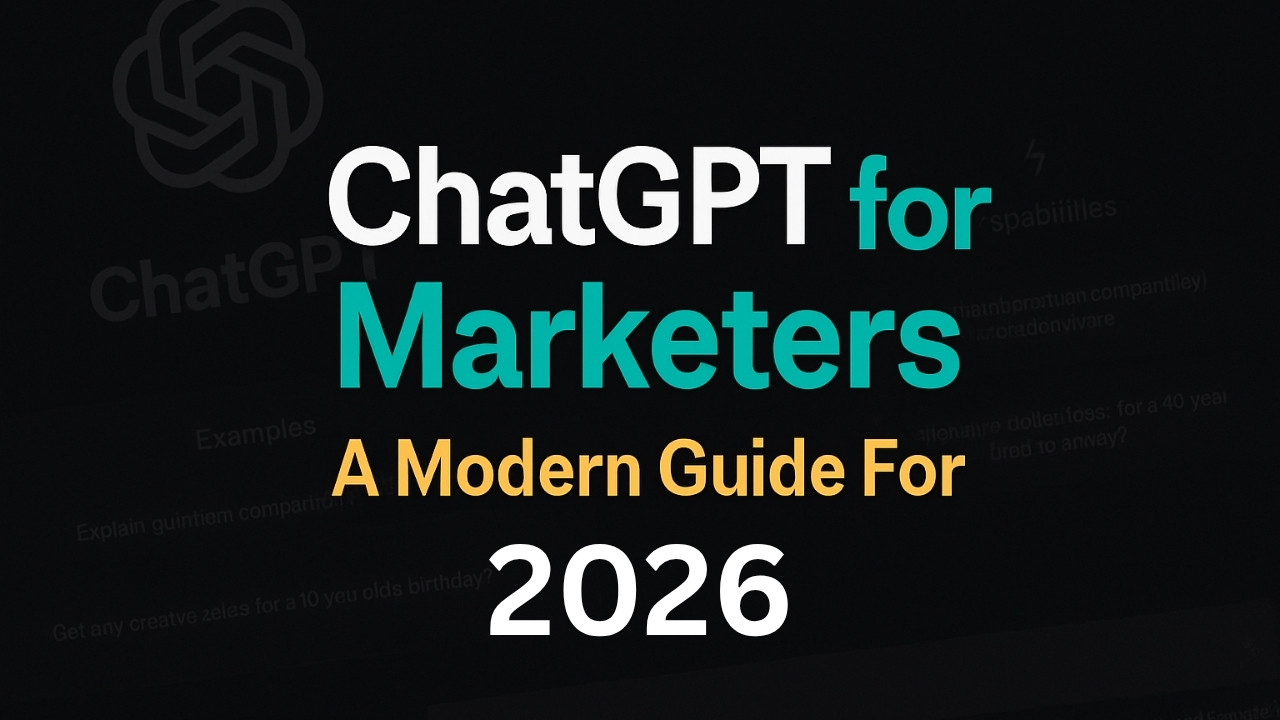Education
YouTube’s Journey! | How It Changed the Internet Forever.

In the early days of the internet, sharing videos with the world was not as seamless as it is today. That all changed with the launch of YouTube in 2005. What started as a small startup founded by three ex-PayPal employees became a revolutionary platform that has defined how modern media works. From viral videos and music sensations to independent creators and global influencers, YouTube has played a central role in democratizing content creation and changing the media landscape.
This blog takes a deep dive into YouTube’s journey — its inception, key turning points, innovations, and lasting cultural impact.
YouTube’s Evolution Over the Years
| Year | Milestone | Significance |
|---|---|---|
| 2005 | Founded by Chad Hurley, Steve Chen, and Jawed Karim | Launched with the aim to make video sharing simple for everyone |
| 2006 | Acquired by Google for $1.65 billion | Massive resources and technical support accelerated platform growth |
| 2009 | Introduction of HD video support | Improved user experience with high-quality content |
| 2010 | Mobile streaming & app improvements | Ushered in an era of on-the-go content consumption |
| 2015 | Launch of YouTube Red (now Premium) | Introduced ad-free viewing and original programming |
| 2018 | Creator monetization and Super Chat features | Gave creators new ways to earn revenue and connect with fans |
| 2020 | YouTube Shorts launched | Entered the short-form content market to rival TikTok |
| 2023+ | Enhanced AI recommendations, auto-chapters, and better analytics | Optimized creator tools and user personalization |
Key Drivers Behind YouTube’s Global Success
1. Openness to Creators of All Levels
One of the strongest features of YouTube is its open-door policy for creators. Whether you’re a student, chef, tech expert, musician, or comedian — the platform gives everyone an equal chance to be seen and heard.
2. Early Monetization Model
In 2007, YouTube introduced the Partner Program, allowing creators to earn money through ad revenue. This attracted serious content makers and turned casual uploaders into full-time YouTubers.
3. Sophisticated Recommendation Algorithms
YouTube’s recommendation engine is among the most powerful in the world. It curates personalized content for each user, keeping people engaged longer and helping creators grow their audience organically.
4. Community Engagement Tools
With features like comments, likes, polls, live chat, and memberships, YouTube supports interactive communities where creators and fans can bond directly.
5. Localization and Global Expansion
With versions available in over 100 countries and 80+ languages, YouTube is localized for global relevance. This approach has helped it become a go-to platform not only in the West but also in countries like India, Brazil, and Indonesia.
Cultural, Economic, and Social Impact of YouTube
YouTube has redefined not only entertainment but also education, business, and activism. Educational creators like Khan Academy and CrashCourse offer free learning. Entrepreneurs use it to launch brands. Activists reach global audiences with critical social messages. Musicians like Justin Bieber got their start here. Traditional media outlets have had to evolve in response to YouTube’s rise.
The platform has also introduced a new class of digital influencers — YouTubers — who command massive fanbases, brand deals, and media coverage. In many ways, YouTube has democratized fame.
Conclusion
The journey of YouTube is a testament to how technology can change the world. What started as a place to share home videos is now a global force shaping the way we learn, entertain, advertise, and even communicate. As it continues to expand into new territories like short-form content, livestreaming, AI-generated captions, and VR experiences, YouTube remains not just a platform — but a cultural phenomenon.
Its influence is undeniable, and its journey is far from over.
Business
Best Ways to Invest Smartly in 2026 | Trends & Tips Revealed!

As we step into 2026, the investment landscape is undergoing a remarkable transformation. Traditional financial tools are evolving, and new, technology-driven platforms are emerging. With access to global markets, data-driven insights, and low-entry investment opportunities, individuals now have more control than ever over their financial future.
This article explores the best investment tools of 2026 — whether you’re a beginner or a seasoned investor. Learn what’s new, what works, and how to make smarter choices in today’s rapidly shifting economy.
Why New Investment Tools Matter in 2026
- The rise of AI and automation in portfolio management.
- Growth of retail investing platforms post-pandemic.
- Emergence of blockchain-based tools and tokenized assets.
- Increased focus on ethical and sustainable investing.
Let’s break down the tools that are changing the game.
Top Emerging Investment Tools in 2026
| Tool/Platform | Type | Key Features | Best For |
|---|---|---|---|
| Robo-Advisors 2.0 | Automated Investing | AI-driven, auto-rebalancing, tax optimization | Beginners, Passive Investors |
| Fractional Real Estate | Property Investment | Buy property shares for as low as $100 | Diversification, Long-term Hold |
| Tokenized Assets | Blockchain Investment | Trade stocks, art, or gold as tokens | Global Investors |
| Green Investment Apps | ESG-focused Platforms | Invest in climate-positive companies/projects | Ethical Investors |
| AI Investment Advisors | Real-Time Intelligence | Predictive analytics, tailored advice | Active Traders |
| Multi-Asset Platforms | All-in-One Tools | Combine stocks, crypto, ETFs in one dashboard | Modern Investors |
| P2P Lending Platforms | Alternative Investment | Lend directly to borrowers via secure platforms | Fixed Returns, Medium Risk |
| Digital Gold Platforms | Commodity Investment | Trade or hold gold digitally with real-time prices | Hedge Against Inflation |
1. Robo-Advisors 2.0 (AI-Powered Investing)
Modern robo-advisors are no longer basic auto-pilot tools. In 2026, they use AI to:
- Analyze market trends
- Predict economic movements
- Adjust your portfolio instantly
Popular Platforms: WealthFront AI, Betterment Pro, SmartAlgo™
Why It’s Great: Low fees, hands-off investing, smart rebalancing
2. Fractional Real Estate Platforms
Instead of buying a full house, investors now own a fraction of real estate — residential, commercial, or rental — using tokenized shares.
Minimum Investment: Often less than $500
Top Use: Diversification and long-term capital appreciation
3. Tokenized Investments & Digital Assets
Tokenization turns real-world assets into tradable digital tokens.
Examples:
- Tokenized stocks (Apple, Tesla)
- Real estate shares
- Gold and precious metals
Benefits:
- 24/7 global trading
- Lower transaction costs
- Secure blockchain records
4. Green & ESG Investment Tools
Sustainable investing is booming. New apps allow users to:
- Invest in eco-conscious companies
- Track carbon footprint impact
- Avoid companies with unethical practices
Popular Apps: EarthVest, GoGreen Capital, ESGTrack™
5. AI Investment Advisors & Trading Tools
These tools provide real-time stock signals, portfolio alerts, and in-depth analysis using machine learning.
Key Features:
- Forecast stock movement
- Identify undervalued opportunities
- Custom strategy planning
Best For: Semi-professional investors and traders
6. Multi-Asset Platforms
2026 brings streamlined dashboards combining:
- Stocks
- Crypto
- ETFs
- Commodities
- Foreign markets
Popular Tools: QuantumPortfolio, CoinVestX, MergedMoney
Why Use Them: Simplicity and powerful data in one place
7. Peer-to-Peer (P2P) Lending
Instead of using banks, lend directly to vetted borrowers using P2P platforms.
Returns: Typically 5%–12% annually
Risk: Medium, but diversified portfolios reduce it
New Features in 2026:
- AI-based borrower rating
- Insurance-backed loans
8. Digital Gold & Precious Metals
Own gold digitally — without physical storage hassles.
- Real-time tracking
- Secure vault-backed accounts
- Easy liquidity
Best For: Inflation hedge, portfolio stability
Tips for Using These Tools Wisely
| Tip No. | Strategy |
|---|---|
| 1 | Start with a small amount to test platform features |
| 2 | Diversify — never rely on a single asset class |
| 3 | Review fees and hidden costs |
| 4 | Set long-term goals before choosing tools |
| 5 | Use platforms with strong regulatory compliance |
Conclusion: 2026 Belongs to Smart, Informed Investors
The best investment tools in 2026 are not just for the rich or professionals. With technology leveling the field, anyone with a smartphone and curiosity can grow wealth. Whether you’re looking to passively invest or actively trade, there’s a tool for your style and strategy.
Success comes from knowing your options, managing your risk, and staying consistent. The sooner you begin, the better your financial outcomes will be.
Business
Xiaomi SU7 Car Review | Features | Specs And Performance 2026!

Xiaomi, a brand long associated with smartphones and consumer electronics, is now making bold moves into the electric vehicle (EV) industry. The company’s first electric car—the Xiaomi SU7—marks a pivotal step in Xiaomi’s broader vision of building a smart ecosystem where everything connects.
With sleek aesthetics, strong performance metrics, and deep software integration, the SU7 isn’t just another EV—it’s a tech-first vehicle designed to rival Tesla and BYD in one of the fastest-growing markets on the planet.
This article dives deep into the features, specs, design philosophy, and market position of the Xiaomi SU7, and explores whether it could be the game-changer in the EV space.
Xiaomi SU7 Overview: Bridging Tech & Automotive
Xiaomi has packed the SU7 with cutting-edge hardware and seamless integration with its smart ecosystem. Here’s a quick overview:
| Feature | Details |
|---|---|
| Model | Xiaomi SU7 |
| Type | Electric Sedan |
| Battery Range | Up to 800+ km |
| Top Speed | Approx. 265 km/h |
| Acceleration | 0–100 km/h in 2.78 seconds |
| Motor Output | Up to 673 hp (in SU7 Max variant) |
| OS & Interface | HyperOS, integrates with Xiaomi phones & smart devices |
| Charging Time | Fast charging – 10 to 80% in ~30 minutes |
| Autonomous Features | Advanced Driver Assistance System (ADAS) |
Design & Aesthetics
The Xiaomi SU7 sports a futuristic, aerodynamic silhouette that’s been compared to luxury sedans like the Porsche Taycan and Tesla Model S. It features:
- Flush door handles
- Seamless LED lighting
- Panoramic glass roof
- Sleek body lines for reduced drag
- Spacious interior with premium finishes
Inside, users get a central touchscreen, digital cluster, and ambient lighting, giving the SU7 a luxury feel without the luxury price tag.
Performance & Powertrain
Available in different configurations (Standard and Max), the SU7 is built for both efficiency and power:
- Single-Motor RWD for standard use
- Dual-Motor AWD for high-performance lovers
- 800V High-Voltage Platform for ultra-fast charging
- Regenerative Braking and intelligent energy distribution
This puts the SU7 in direct competition with mid to high-end EVs already on the market.
Software Integration & Connectivity
Where Xiaomi really shines is its HyperOS—an intelligent operating system that syncs your phone, smart home, and vehicle seamlessly.
- Voice Commands
- Remote Car Control via Xiaomi Phone
- AI Driving Assistant
- Over-the-Air (OTA) Software Updates
- Smart Route Optimization
This level of software cohesion could make the SU7 a top pick for tech-savvy users already embedded in Xiaomi’s ecosystem.
Target Audience & Market Strategy
Xiaomi is focusing on:
- Tech Enthusiasts who value integration and innovation
- Eco-Conscious Drivers looking for EVs with high range
- Mid-range Buyers who want premium features without premium prices
- Xiaomi Ecosystem Users ready to extend their tech to transportation
Competitive Analysis: How It Stacks Up
| Car Model | Range | Top Speed | 0–100 km/h | Starting Price (Estimate) |
|---|---|---|---|---|
| Xiaomi SU7 | 800+ km | 265 km/h | 2.78 sec | ~$30,000–$40,000 |
| Tesla Model 3 LR | 602 km | 233 km/h | 4.4 sec | ~$47,000 |
| BYD Seal | 700+ km | 180 km/h | 3.8 sec | ~$32,000 |
Xiaomi is undercutting competitors on pricing while matching or exceeding performance specs.
Challenges & Concerns
While the SU7 shows immense promise, Xiaomi faces the usual EV market challenges:
- Battery sourcing & supply chain stability
- Global manufacturing & delivery
- Software safety & regulation compliance
- Building consumer trust in a new product category
Yet with a $10+ billion investment in EV R&D and hiring ex-BMW engineers, Xiaomi seems prepared for the long haul.
Conclusion
The Xiaomi SU7 is more than just a debut electric car—it’s a declaration. Xiaomi has boldly stepped into a competitive industry with a feature-rich, performance-driven, and tech-integrated EV that signals its ambition far beyond smartphones.
If Xiaomi delivers on its promises and scales production globally, the SU7 could be one of the most important EV launches of this decade. For users already within Xiaomi’s smart ecosystem, this vehicle represents the final piece of a truly connected lifestyle.
Education
ChatGPT for Marketers | A Modern Guide For 2026!

Artificial intelligence is no longer a futuristic fantasy—it’s today’s competitive edge. At the center of this transformation stands ChatGPT, a powerful language model developed by OpenAI, now widely used in business and marketing across the world.
In 2026, companies ranging from startups to global corporations are leveraging ChatGPT not just for generating text, but for optimizing strategies, improving engagement, and automating repetitive tasks. Its ability to think, write, and assist like a virtual team member makes it one of the most impactful tools of the decade.
This post explores how ChatGPT can be integrated into business and marketing operations, how it boosts productivity, and how to get the best results from it.
Why ChatGPT Is Changing the Business World in 2026
ChatGPT has evolved into a business assistant capable of handling high-volume, high-quality content tasks. Here’s why it matters:
- Scalability: Produces content on demand—blogs, emails, captions, and more.
- Cost-Effectiveness: Reduces the need for large writing or marketing teams.
- Consistency: Maintains tone and message across platforms.
- Speed: Delivers drafts, scripts, and ideas instantly.
What used to take hours now takes minutes—without sacrificing quality.
Top Use Cases of ChatGPT in Business & Marketing
| Use Case | What It Does | Impact |
|---|---|---|
| Content Creation | Blog posts, social media captions, product descriptions | Saves time, maintains tone consistency |
| Customer Support | Chat replies, help center articles, automated responses | Improves service response time |
| Email Marketing | Drafts sequences, subject lines, and CTAs | Increases open rates and conversions |
| Ad Copy Generation | Writes Google, Facebook, and LinkedIn ad variants | A/B test faster, target better |
| Market Research | Summarizes competitors, audience data, and trends | Informs strategy and decisions |
| Product Branding | Creates slogans, brand voice guidelines, and tone frameworks | Enhances messaging and brand clarity |
| Proposal & Pitch Drafting | Writes business proposals and marketing pitches | Speeds up client communication |
Real-World Applications of ChatGPT in Marketing
1. Blog Writing & SEO Content
Marketers use ChatGPT to create outlines, introductions, product reviews, and full-length articles optimized for search engines.
2. Social Media Content
From Instagram captions to YouTube scripts, ChatGPT helps marketers keep up with daily posting demands while maintaining a unique voice.
3. Ad Campaign Copy
ChatGPT generates variations of ad headlines, descriptions, and call-to-actions for A/B testing on platforms like Google Ads and Meta Ads.
4. Email Campaigns
Drafting cold emails, follow-ups, nurture sequences, and promotional emails becomes effortless with AI-powered assistance.
5. Video Marketing Scripts
Creators and businesses use ChatGPT to write YouTube video scripts, reels scripts, or explainers with hooks, structures, and closing lines.
How to Get the Best Results from ChatGPT
Step 1: Define the Task Clearly
The clearer your prompt, the better the output. Instead of “write a blog,” say:
“Write a 300-word blog introduction about wearable fitness tech in a professional tone.”
Step 2: Add Brand Context
Share your brand’s voice, tone, audience, and goals. Example:
“Write as a SaaS company targeting small businesses in a friendly tone.”
Step 3: Build Prompt Templates
Use repeatable prompt formats for recurring tasks like:
- “Create 3 Instagram captions for a skincare brand.”
- “Write a LinkedIn post about remote work benefits.”
Step 4: Refine and Edit
Always human-edit the first draft. ChatGPT gives a strong base, but personalization and nuance still matter in professional output.
AI Doesn’t Replace You—It Amplifies You
ChatGPT isn’t a replacement for skilled marketers or business thinkers—it’s a multiplier. When used correctly, it frees you from repetitive tasks so you can focus on:
- Strategy
- Creativity
- Relationship Building
- Innovation
That’s the real value of integrating ChatGPT into business workflows.
Advanced Use: ChatGPT + Automation Tools
To supercharge operations, many businesses connect ChatGPT to tools like:
- Zapier or Make for workflow automation
- Notion or Google Sheets for managing AI outputs
- Slack or Email for real-time AI assistance
This setup turns ChatGPT into a round-the-clock assistant embedded into your systems.
Conclusion
In 2026, using ChatGPT for business and marketing is no longer optional—it’s strategic. From content creation to customer communication, it offers scalable solutions that save time, boost output, and enhance quality.
The key is to understand how to guide it effectively and integrate it into your team’s daily flow. Businesses that master this early gain a lasting advantage.
Ready to make ChatGPT your most valuable team member? Start with a clear goal, use strategic prompts, and let the AI handle the rest..

















